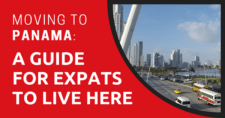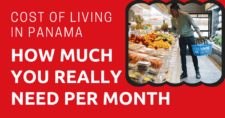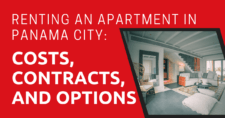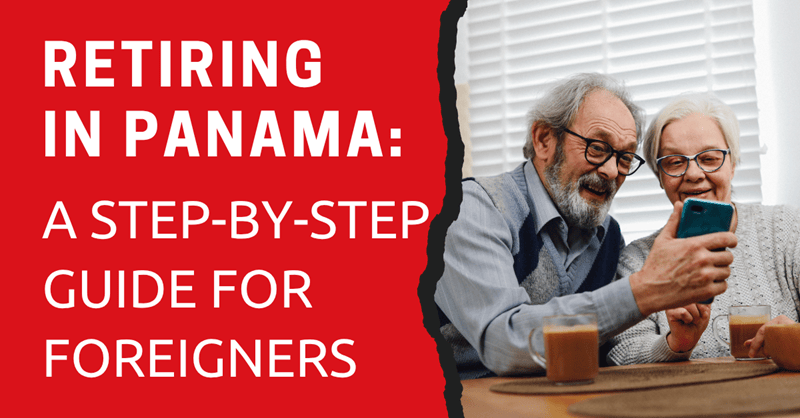
Panama is one of the top retirement destinations in the world. This Central American country offers a warm, tropical climate year-round, stunning beaches on both the Pacific and Caribbean, and incredible natural beauty from the mountains to the ocean.
Retirees are drawn to Panama not just for its scenery, but for its variety of lifestyles. You can enjoy the comforts of Panama City, with its modern apartments and excellent health care. Or you might prefer the laid-back pace of a beach town, the cooler air of the highlands, or the peace and quiet of the countryside. Whether you dream of ocean views, jungle hikes, or fresh mountain mornings, you’ll find a community that fits your style.
In addition, Panama is known for its affordable cost of living and great healthcare system. The country is also close to the US and Canada, making it a popular option for Americans and Canadians.
Panama also makes retirement easy. With one of the most attractive retiree visa programs in the world, affordable health care, and modern conveniences, it’s a place where you can settle in quickly and comfortably. In this article, I’ll walk you through what it’s really like to retire here, and why so many retirees are choosing to call Panama home.
This article will take approximately 31 minutes to read. Don't have the time right now? No worries. Email the ad-free version of the article to yourself and read it later!
Disclaimer: This article may include links to products or services offered by ExpatDen's partners, which give us commissions when you click on them. Although this may influence how they appear in the text, we only recommend solutions that we would use in your situation. Read more in our Advertising Disclosure.
Contents
- About Me
- Why Retire in Panama
- Challenges of Retiring in Panama
- Cost of Living
- Where to Retire in Panama
- Recommended Places to Retire in Panama
- Preparing for Relocation to Panama
- Visas
- Should You Hire an Immigration Lawyer?
- Panama’s Foreigner ID: The E-Cedula
- Bringing Pets to Panama
- Accommodation
- Can Foreigners Own Property in Panama?
- Renting in Panama
- Flights
- Health Insurance
- Quality of Care
- Settling in Panama
- Ready to Retire in Panama?
About Me
I’ve lived in Panama City for four years. While I’m a remote worker rather than a retiree, my work as a writer has led me to speak with dozens of retirees over the years. They came from different countries and backgrounds, but they all had one thing in common: they considered moving to Panama the best decision they made for their retirement. Here’s why…
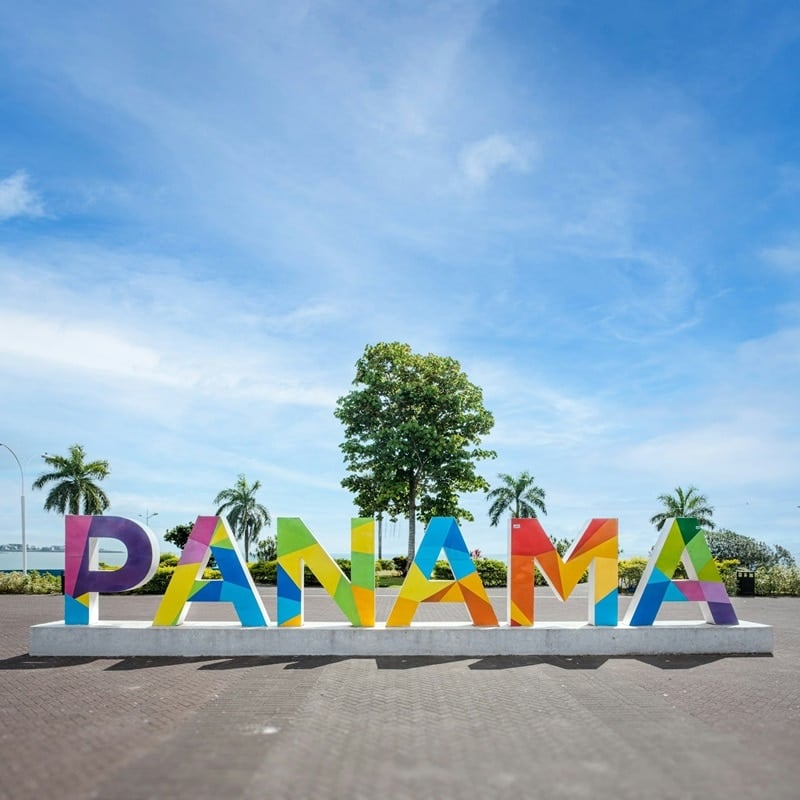
Why Retire in Panama
Based on my conversations with retirees in Panama, here’s what they like about living here.
Affordable Yet Comfortable Lifestyle
Many retirees say their quality of life has improved since moving to Panama. With around US$2,000 a month, they can live comfortably in any part of the country. This budget also allow them to rent a modern apartment or house in a safe neighborhood, eat at restaurants, access high-quality health care, and still have enough left for travel and leisure.
Excellent and Affordable Health Care
Panama is known for having some of the best hospitals in Latin America. The country has a high-quality private health care system, especially in the main cities of Panama City and David. Many doctors are U.S.-trained and speak English.
Use of the U.S. Dollar
Panama uses the U.S. dollar as its national currency. It is pegged 1:1 to the Panamanian Balboa. Retirees from the States, or those who are used to handling the U.S. dollar, won’t need to worry about currency exchange.
Straightforward Retirement Visa
Panama’s Pensionado Visa program is one of the best retiree visas in the world. With proof of just US$1,000 monthly income, you can qualify for permanent residency and discounts on airfare, medication, utility bills, doctor appointments, and more.
Attractive Climate
Panama is warm year-round, making it a desirable place for retirees who are tired of the cold and snow. The coastal areas are hot and tropical, but there are also mountainous regions like Boquete and El Valle de Antón where the weather is mild.
Challenges of Retiring in Panama
If you’re considering retiring in Panama, it’s important to be aware of a few potential challenges. While thousands of retirees live happily here, adjusting to a new country does come with a learning curve.
Bureaucracy and Long Waits
Dealing with government agencies can be slow and confusing. Legal processes usually involve multiple trips, long waits, and sometimes a lack of good communication and customer service. You can overcome this struggle by hiring a lawyer or asking a knowledgeable friend to go with you.
Health Care Access Outside Big Cities
Medical facilities are limited in many rural areas or smaller beach towns. If you’re going to live outside Panama’s major cities, you’ll probably need to travel for specialized care. However, the country is so small that a big city is only a two- or three-hour drive away, at most.
Language Barrier
English is widely spoken in touristic areas and in towns that have large foreign populations (like Boquete or Coronado). But unless you speak at least basic Spanish, you might struggle with processes like going to the bank or hiring a local service.
Climate and Humidity
Panama’s rainy season lasts eight months of the year. This can be an issue if you don’t like daily downpours. It is also extremely humid year-round, though the humidity is less intense in higher-elevation areas.
Infrastructure Challenges
Panama City has impressive infrastructure like the Metro system and skyscrapers, but outside the capital, infrastructural standards are lower. Roads are often in disrepair, with potholes, lack of pavement markings, and poor lighting. There are also occasional water and power outages.
Cost of Living
Depending on your location and lifestyle, monthly expenses in Panama typically range between US$1,200 and US$2,500. Some retirees manage to live simply on around US$1,200 per month, while others prefer to spend more for comfort, convenience, or luxury, especially in areas like Panama City or popular beach towns. A budget of US$1,800 to US$2,200 per month is usually enough for a comfortable lifestyle that includes a modern apartment, entertainment, a car, and health insurance.
Your exact cost of living will depend on factors like:
- Where you live (Panama City is more expensive than the rest of the country)
- Your housing preferences (apartment, gated community, or beachfront home)
- Lifestyle choices (dining out often, having a car, using A/C regularly, buying imported food and products)
- Whether you live alone or have a partner or family
Here are some average monthly expenses in Panama:
| Expense | Price in US$ |
|---|---|
| Accommodation (Rent) | $600 – $1,200+ (depending on area) |
| Food (groceries & eating out) | $250 – $500 |
| Electricity | $30 – $60 (without A/C) $100 – $200 (with regular A/C use) |
| Water (tap water is drinkable) | $10 – $25 |
| Internet | $30 – $50 |
| Cell phone plan | $20 – 30 |
| Transportation | $25 – $100 (Uber, public transportation, or gas/maintenance for car) |
| Private health insurance | $60 – $100 (depending on age and plan) |
| Extras (gym, outings, travel, weekend activities) | $50 – $150+ |
I live on the Avenida Balboa, right in front of the Cinta Costera in Panama City, which is one of the most scenic places to live in the capital. I pay $700 a month for a two-bedroom apartment that has a gorgeous view overlooking the bay. My internet service costs $37 a month, my monthly electric bill is usually around $70, and I pay about $300 a month for groceries.
Overall, my monthly cost of living totals around US$1,100 for the basics.
Find out more: Cost of Living in Panama – How Much You Need Per Month
Where to Retire in Panama
Choosing where to retire in Panama is one of the most important decisions you’ll make. It’s not just about the scenery, it’s also about access to healthcare, infrastructure, safety, and your preferred pace of life.
Panama offers a wide range of options, from mountain towns to beach communities and city living. Infrastructure can vary widely by region.
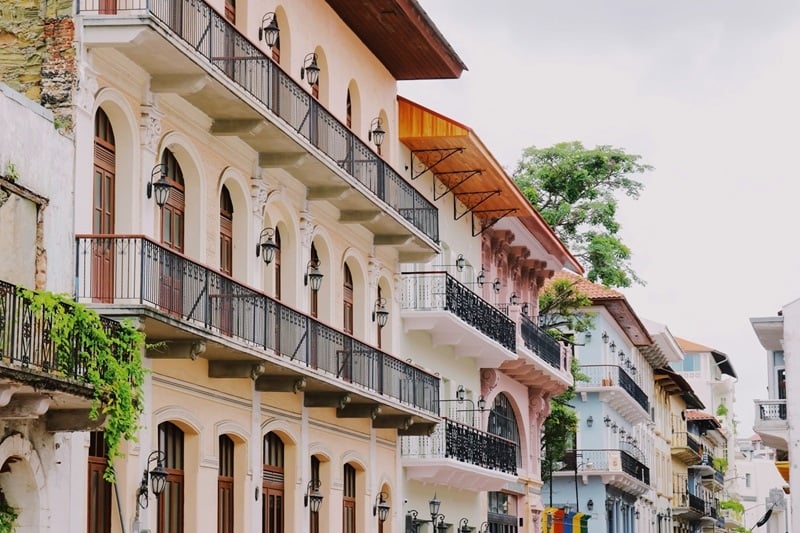
Recommended Places to Retire in Panama
- Boquete (Chiriquí): A favorite among retirees. This highland town offers cooler weather, mountain views, a large expat community, and proximity to private hospitals in nearby David. Great for those who love nature and a slower pace of life.
- Panama City: The capital has modern amenities, solid health care, international dining, shopping, and nightlife. It’s perfect if you prefer urban living, but it’s also the most expensive place to live in the country.
- Coronado: One of the most popular beach towns for retirees. Located about 1.5 hours from Panama City, it offers beach access, golf, private clinics, and an active expat community.
- El Valle de Antón: A lush mountain town set inside a dormant volcanic crater. Cooler temperatures, beautiful hiking, and weekend markets make it a peaceful and nature-filled option.
- Las Tablas (Azuero Peninsula): Great for those looking to experience traditional Panamanian culture, festivals and fairs, low cost of living, and proximity to beautiful beaches.
Please note that this list is based on the four factors below.
- Access to quality healthcare: You’ll want to be within reach of a good private hospital, especially as you age. Panama City, David, and Santiago all have private clinics and hospitals.
- Reliable infrastructure: Look for areas with dependable electricity, water, and high-speed internet, especially if you plan to stream content.
- Climate and altitude: Panama’s climate varies with altitude. Highland towns are cooler and breezier, while lowland and beach areas are hot and humid year-round.
- Safety and walkability: Most of Panama is safe but always visit first to get a feel for the neighborhood. Some gated communities and small towns offer peace of mind and security.
Tip: Before choosing any city, I always recommend that everyone I talk to rent first, explore the area during both the dry and rainy seasons, and connect with locals and other retirees before committing long-term. This is the best way to find the right place to live. Nothing beats hands-on experience.
Preparing for Relocation to Panama
Once you’ve made the decision to retire in Panama, the next step is thoughtful planning.
Relocating to a new country can be exciting and overwhelming at the same time, but preparing in advance will make the process smoother and less stressful. You’ll want to think through your finances, legal paperwork, housing options, healthcare, and even how to bring your pets.
Many retirees I’ve talked to spend at least a year preparing before their move.
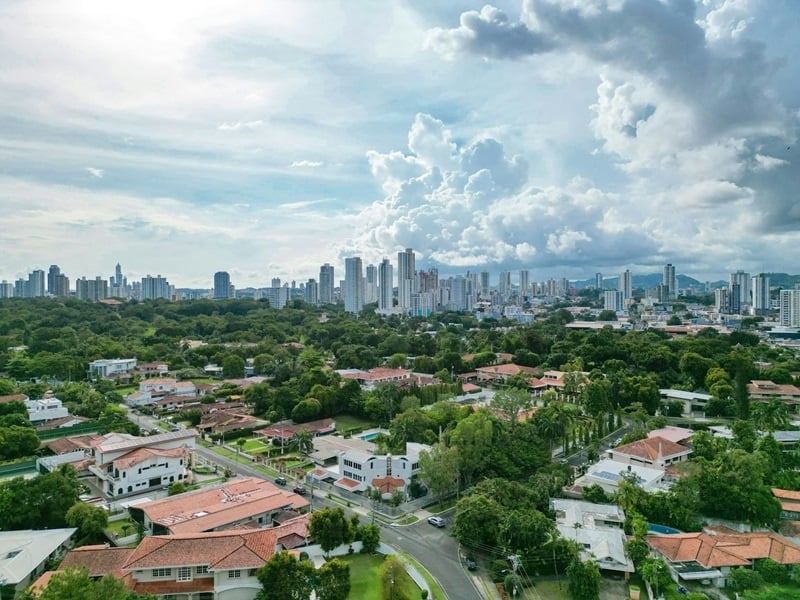
Visas
Before moving, the first major step is obtaining the right visa. While Panama offers several pathways to residency, these are the most relevant for retirees.
Pensionado Visa (Retiree Visa)
The Pensionado Visa is the main visa for retirees in Panama, so it’s also known as the Retiree Visa.
This permit is available to anyone over 18 years old who has a lifetime monthly income of at least US$1,000 from a pension, retirement fund, or Social Security. You can include your spouse and dependents on your application as long as you can prove an additional US$250 per person, per month.
To qualify, you’ll need to show that your pension income is guaranteed for life.
Key features:
- Permanent residency status
- Discounts on healthcare, travel, dining, and more
- No minimum age requirement
- You can include your spouse and dependents
- No need to invest or open a business
Requirements include:
- Pension certification letter (notarized and apostilled)
- FBI background check (apostilled)
- Valid passport
- Local health certificate (done in Panama)
- Proof of address in Panama
The Pensionado Visa offers immediate permanent residency and a long list of discounts and benefits, like 25% off domestic and international flights, 15% off hospital and clinic fees, and 50% off hotel rooms from Monday to Thursday.
Because this visa was created for retirees, it does not allow you to work or hold a work permit.
Qualified Investor Visa
Sometimes called the Golden Visa, this permit gives you immediate permanent residency if you buy a property worth US$300,000 or more. There are other ways to qualify, including a US$500,000 investment in the Panamanian stock market, but purchasing property is the easiest, most affordable, and most practical option.
Additional requirements include:
- Clean criminal record
- Proof that the funds are from a legal source
- Health certificate from a Panamanian physician
- Valid passport and application through an authorized attorney
Unlike most other visas, the Golden Visa offers immediate permanent residency, with no temporary residency period required.
In my opinion, the Qualified Investor Visa is an attractive option if you’re planning to retire in Panama for the rest of your life and buy property here. Once you get permanent residency, you don’t need to worry about a visa anymore.
Should You Hire an Immigration Lawyer?
In fact, you must hire an immigration lawyer. Panama is one of the few countries in the world where a licensed immigration lawyer is required to apply for a visa (another example is Malaysia’s MM2H visa).
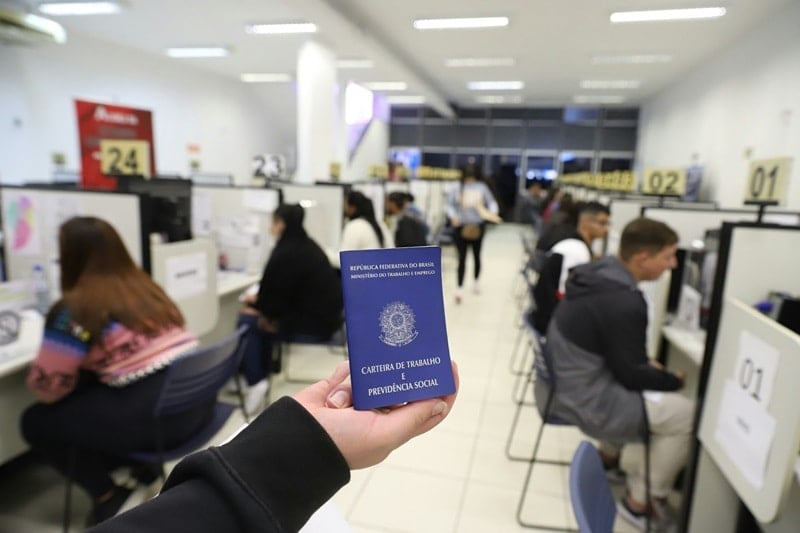
You should expect to pay between US$800 and US$1,500 to hire a Panamanian attorney. The exact cost will depend on the law firm and the complexity of your case. Your lawyer can also help you decide which immigration pathway is best for your situation.
However, this isn’t necessarily a bad thing. When you hire a licensed lawyer, they’ll guide you through the process, handle document submissions, and coordinate with government offices on your behalf.
Documents You’ll Need Before Moving
Start gathering these key documents well in advance of your move:
- Valid passport (with at least 6 months before expiration)
- Birth certificate (apostilled)
- Marriage certificate, if applicable (apostilled)
- FBI background check (valid for 6 months, apostilled)
- Pension letter or financial documents (notarized and apostilled)
- Medical records and prescription lists
- Return flight ticket (if traveling on a tourist visa initially)
- Digital and physical copies of all documents
Keep both physical and digital backups and be sure to have documents translated into Spanish where required.
Panama’s Foreigner ID: The E-Cedula
Once you’ve received permanent residency, you can apply for a Panamanian E-Cédula. This is a national ID card for foreigners. While it’s optional, many residents find it helpful for opening bank accounts, making medical appointments, and showing proof of residency.
Bringing Pets to Panama
Moving with your is very doable in Panama as long as you have the right paperwork in place.
First, apply for home quarantine. At least two weeks before your trip, submit a Home Quarantine Application Form to Panama’s Ministry of Health. This lets your pet complete the 40-day quarantine period at home instead of at the airport. The fee is US$130 per pet, and you’ll need to pay in cash when you arrive.
Before your flight, gather the following documents. These must be signed by your vet, certified by your home country’s animal health authority (like the USDA in the U.S.), and apostilled at the nearest Panamanian consulate:
- Vaccination certificate showing your pet is up to date on rabies, distemper, parvovirus, leptospirosis, and hepatitis
- Certificate of good health
- Certificate of origin (where your pet was born)
Your vet can help you with these forms. Once the health certificate is issued, you’ll have 10 days to get everything authenticated and arrive in Panama.
You’ll also need to complete an import form and keep it with you when traveling. Once you land in Panama, an airport vet will inspect your pet. The fee for this is US$16. If everything checks out, you and your furry companion are free to leave the airport.
Airport vets are available Monday through Friday, 7:00 a.m. to 11:00 p.m. Requirements vary slightly by country, so it’s always a good idea to double-check with the Panamanian embassy in your home country before you travel.
Accommodation
Panama City has the widest range of places to live. Whether you want to rent or buy, you’ll find everything from studios and one-bedroom apartments to penthouses and townhouses. Most newer buildings come with perks like swimming pools, gyms, playgrounds, social areas, and concierge services. You can expect to rent a two-bedroom apartment in a modern building with these amenities for around US$1,500 per month.
Outside the city, smaller towns mostly offer houses rather than apartments. In many rural areas, you can buy a family home for between US$150,000 and US$250,000. There are also several planned communities being developed around Panama, often with attractive pre-construction prices.
And if you want to build your own home, construction costs in many parts of Panama are low enough to make that an affordable option.
Can Foreigners Own Property in Panama?
Yes, foreigners can own property outright in Panama with the same rights as Panamanian citizens.
Here are common ways retirees secure housing:
- Buy a home, condo, or land in their own name
- Rent long-term in furnished or unfurnished apartments, homes, or gated communities
- Lease beachfront or rural property
If you’re considering buying, you can work with a real estate attorney to ensure a smooth transaction, perform due diligence, and register your title properly.
Renting in Panama
Renting is a great way to explore different parts of the country before committing to a long-term investment. Lease terms are typically 6 or 12 months, and rentals often come furnished.
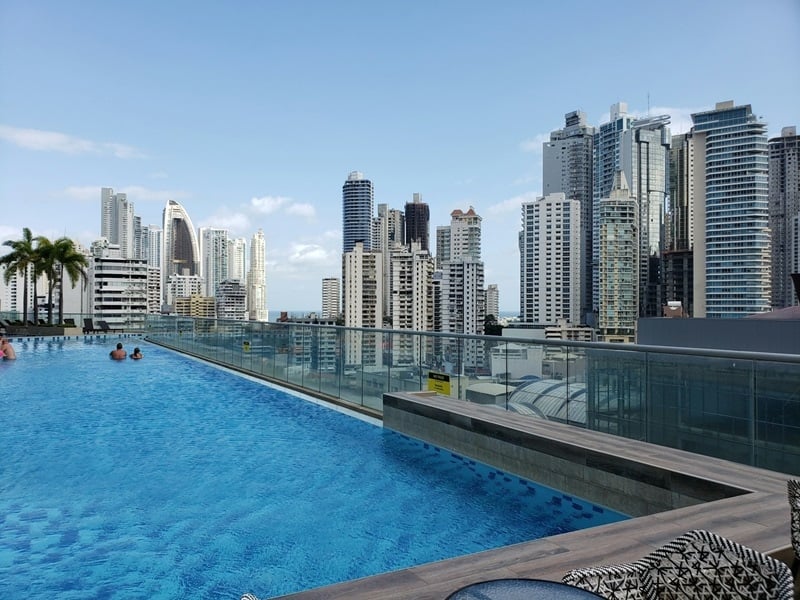
Popular websites for finding listings include:
If you’re working with a real estate agent, look for someone who is bilingual and has experience working with foreign retirees. Always ask if the property is titled and registered properly, and get contracts reviewed in both Spanish and English before signing.
Find out more: Renting an Apartment in Panama City: Costs, Contracts, and Options
Flights
It’s a good idea to book your flight a few months in advance, especially if you’re traveling during Panama’s tourist season (December to April). Planning ahead helps you find better fares, avoid overbooked flights, and prepare for larger crowds at airports during peak months.
Choose the Right Airport for Your Destination
Panama’s main international airport is Tocumen (PTY) in Panama City. Known as the Hub of the Americas, Tocumen offers direct flights to many cities across North, Central, and South America, the Caribbean, and Europe. Copa Airlines is Panama’s national carrier.
If you’re traveling to Chiriquí Province, Enrique Malek International Airport (DAV) in David connects to and from Panama City. There are also several smaller airports with domestic flights to different parts of Panama, including:
- Marcos A. Gelabert Airport (PAC) in Albrook, Panama City
- Panama Pacífico International Airport (BLB) in Panama Pacífico, just across the Bridge of the Americas
- Bocas del Toro International Airport (BOC) on the beautiful Caribbean islands of Bocas del Toro
- Scarlett Martínez International Airport (RIH) in Río Hato, which even offers direct flights to Quebec, Toronto, and Montreal in Canada
Keep in mind that flights to Panama tend to be more expensive during the dry season (January to April), which is peak tourist time. Prices also spike around holidays like Christmas, New Year, Carnival in February, and Independence Day in November. While international flights land at Tocumen International Airport, you can often catch connecting domestic flights to reach your final destination.
Planning What to Ship
Several companies can help you ship your belongings to Panama, whether you’re moving a few personal items or an entire household. The most common container sizes are:
- 20 ft. container: About 1,000 cubic feet of space, good for a small home
- 40 ft. container: Around 2,200 cubic feet, enough for a larger home with four or more bedrooms
The cost to ship depends on where you’re sending from, which part of Panama you’re shipping to, and the size and type of items. You can use this from to get free online estimates from upto 5 international movers. Make sure to choose a company experienced with shipping to Panama and familiar with the country’s customs rules.
If you want your items to arrive faster, you can opt for air freight, but it’s pricier. Sea freight is more affordable but takes several weeks. Most retirees don’t ship a lot of belongings because it’s expensive and slow. The most budget-friendly way is to pack as much as you can into your suitcases for the plane.
If you have extra things that won’t fit, you can send a pallet of boxes via a mail forwarding company like Mail Boxes, etc., which costs about US$10 per cubic foot. Panama has plenty of home goods stores, so you can buy new furniture and household items locally, often for much less than shipping costs.
What to Bring
Focus on what matters most and what’s hard to find or replace here, like:
- Quality kitchen tools and cookware
- Your laptop, monitor, and tech gadgets
- Specialty toiletries or cosmetics
- Prescription medication (bring a doctor’s note)
Pharmacies in Panama are well-stocked, but having your original prescriptions and ID helps with refills, especially for meds that aren’t common. Keep in mind that availability may vary in rural areas, so you might have to visit several pharmacies or a nearby city for certain medicines.
What Not to Bring
Leave these behind or plan to buy locally:
- Bulky winter clothes (Panama’s tropical climate means you won’t need them)
- Firearms and drones (these may be restricted or require special permits)
- Wood and leather furniture (humidity can damage these materials)
- Plants, seeds, and soil (restricted for biosecurity reasons and require permits)
Health Insurance
Health insurance is an important consideration when moving to Panama. Some retirees choose to pay out of pocket, since care is affordable, but most retirees and long-term residents prefer to have a policy in place for peace of mind. If you want coverage from day one, it’s a good idea to arrange your insurance before you arrive.
There best health insurance options for retirees are international and local private insurance.
International insurance is the best option if you want access to the top private hospitals and full coverage for emergencies. It’s also your best bet if you want coverage while traveling or plan to visit other countries for treatment. These plans tend to be the most expensive, but they offer the highest level of care.
A more affordable choice is to purchase a local private insurance plan from companies like ASSA, Pan-American Life, or MAPFRE. These are good for people who plan to stay in Panama long-term. Coverage varies depending on age and pre-existing conditions, and annual deductibles are commonly $300-$500. Local plans often cost $60-$100 per month.
Find out more: Health Insurance in Panama: What You Need to Know as an Expat
Quality of Care
Medical care in Panama is generally high-quality, especially in private hospitals in larger cities. Doctors are often trained abroad, and many speak English. A consult with private doctor might cost $50-$75 out of pocket. Private clinics are modern and well-equipped, while public hospitals may be less consistent in terms of staffing and supplies.
Retirees usually use the private health care system because of its higher-quality care and shorter (or zero) wait times.
If you’re living outside Panama City, check the quality of nearby hospitals before deciding where to settle. In rural areas, you may need to travel to a larger city for anything beyond basic care.
Find out more: Panama Hospitals: What To Do When You Need Medical Treatment
Settling in Panama
Here’s what you should do and expect when setting up your life in Panama.
Banking
If you plan to retire in Panama, you’ll need a local bank account. It’s actually a requirement for applying for residency, and it makes everyday life much easier. You’ll be able to pay rent, utilities like electricity and water, internet, and cable bills with quick local transfers.
Both residents and non-residents can open bank accounts in Panama, but most local banks prefer to work with clients who have legal residency or are at least in the process of applying. If you’re here on a tourist visa, you might find that some banks won’t let you open an account.
There are more than 50 banks operating in the country. Some are state-owned, like Banco Nacional and Caja de Ahorros, while others are privately run. The private banks are either domestic or international.
Here is a list of the banks that retirees most commonly use:
It’s a good idea to open an account with Banco General because it’s the most widely used bank in Panama. Banco General also has a convenient instant-payment feature called Yappy, which everyone uses to pay for all kinds of services.
When opening an account, it’s best to visit the branch in person and bring the following documents:
- A valid passport
- Secondary ID: your driver’s license or Panamanian migration card (if you have one)
- Proof of address: a recent utility bill or signed and notarized lease agreement
- Proof of income: recent pay stubs, tax returns, or bank statements
- Bank reference letter: a document from your home bank detailing your banking history. This letter should be no more than 30 days old.
- Initial deposit: this depends on the bank and type of account.
SIM Card
Getting a local SIM card in Panama is easy. You can buy one for about US$1.50 at official carrier stores, supermarkets, or convenience stores. Avoid buying one at the airport, since prices are always higher there. Your SIM will come with a Panamanian phone number.

The main mobile providers are Tigo and Más Móvil. All of them offer prepaid (prepago) and monthly postpaid (postpago) plans.
- Prepaid (prepago) plans let you buy data as needed. You can recharge through the company’s app or by picking up a data card at a store.
- Postpaid (postpago) plans are billed monthly, typically around $20-$30. To sign up, you’ll need to visit a branch and provide your ID and payment method.
I have a monthly (postpaid) plan with Tigo that costs $21 and comes with unlimited data. On a recent trip back to the United States, I discovered that I had coverage through my plan there. Once a month, I receive my phone bill through the app and make the payment with my debit card, though there is also an option to set up automatic payments.
Find out more: SIM Cards in Panama: Plans, Providers, Costs, and Where to Buy
Utilities
Your basic utilities in Panama will include electricity, water, internet, and, if you own an apartment, monthly building management fees.
If you’re renting, it’s common for landlords to cover the water bill and management fees. You’ll typically be responsible for paying electricity and internet. Most bills can be paid online using a local bank account or debit card, and some utility companies also offer payment through apps or at local convenience stores.
Electricity in Panama is generally stable, especially in Panama City. Outages are rare and usually brief. Most happen during thunderstorms and last less than 15 minutes.
In more rural parts of the country, blackouts are slightly more frequent but still infrequent enough not to disrupt daily life. The two main electricity providers are ENSA and Naturgy, depending on your location.
Internet speed varies based on where you live. If you’re in a major city or town, you’ll likely have access to fast, fiber-optic service with speeds between 100–600 Mbps. However, rural areas may not be connected to fiber networks yet. The farther you are from a city, the slower the internet is likely to be.
The most popular internet service providers in Panama are Tigo and Cable & Wireless (C&W). If high-speed internet is important to you, be sure to ask landlords, property managers, or neighbors whether fiber is available before signing a lease.
Taxation
One of the biggest benefits of living in Panama is its territorial tax system. This means that only income earned within Panama is subject to tax. If you’re earning money from abroad, you won’t owe Panamanian income tax on it. This means that Panama will not tax your foreign pension or investment earnings.
If you do earn income locally, Panama uses a progressive tax system. The first US$11,000 per year is tax-free. Income from US$11,001 to US$50,000 is taxed at 15%, and income over US$50,000 is taxed at 25%. These rates apply per bracket, not on your total income—so you’ll only pay higher rates on the portion that falls into the higher brackets.
Social Life
Making friends in Panama is easier than you might think, especially if you join a few local communities. One of the best ways to meet other retirees is by joining a Facebook group. Popular options include Expats in Panama, which has tens of thousands of members. You’ll find everything from housing tips and event invites to friendly conversations and recommendations.
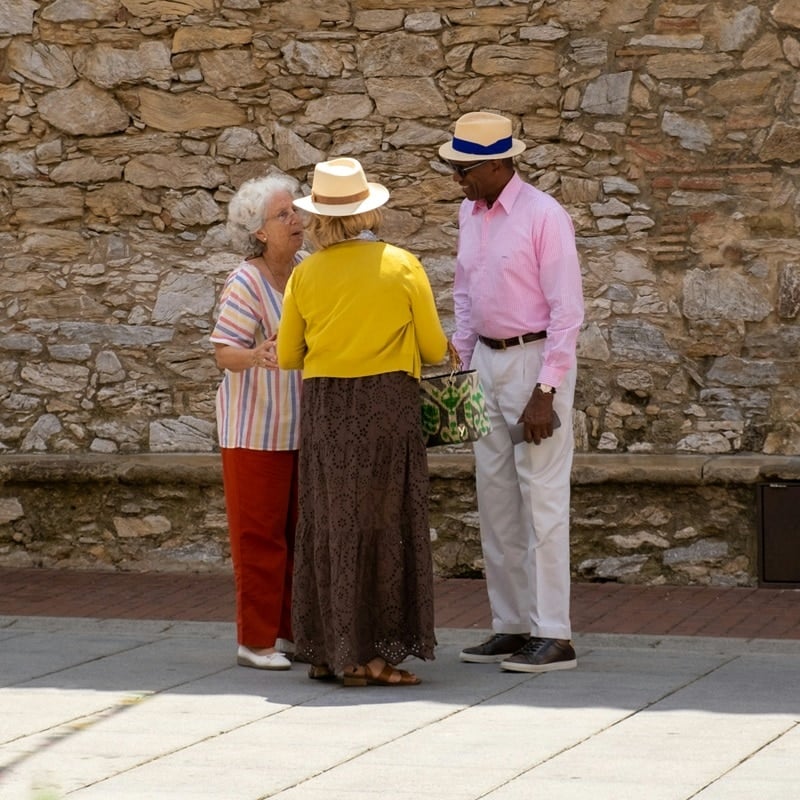
If you’re headed to a smaller town like Boquete or Coronado, there are local expat groups for those areas, too.
If you want to make Panamanian friends, consider volunteering. The website Ponte en Algo is a great place to start. There are hundreds of volunteer opportunities across Panama. Whether you’re passionate about working with kids, protecting the environment, or helping animals, you’ll find an organization that fits your interests. It’s also a fantastic way to practice your Spanish.
Speaking of Spanish, joining a language school is another great way to immerse yourself. Schools like Casco Antiguo Spanish School and EPA! Español en Panamá help students learn quickly through weekly classes, cultural immersion, and fun activities. Taking classes can boost your confidence and open up new social opportunities.
Another way to meet people and explore Panama at the same time is by joining a trip with a local tour company. These group outings are often affordable (many cost US$50 or less) and take you to places you might not go on your own. Look for tour agencies that cater to locals rather than tourists. You’ll often find better prices and a more authentic experience. Many of these tours include transportation.
Ready to Retire in Panama?
Everyone’s move to Panama looks a little different. For me, the process took nearly a year from the moment I started planning to the day I became a legal resident. Here’s what that journey looked like:
- October 2020: I started applying for jobs in Panama City and began setting aside a larger portion of my paycheck to cover moving costs.
- December 2020: I began interviewing with a publishing company based in the city.
- January 2021: I got the job offer and booked a one-way ticket to Panama for May.
- April 2021: I wrapped up my lease, moved my belongings into storage at my parents’ house, and contacted an immigration lawyer. She helped me understand what documents to bring (like a police report), and I spent the rest of the month gathering everything I’d need.
- May 2021: I found a three-bedroom apartment in the 12 de Octubre neighborhood of Panama City through a friend, signed the lease, and found two roommates to share the space. I packed everything into three suitcases and boarded my flight. Once in Panama, I opened a bank account and began my residency process with my lawyer’s support.
- September 2021: My Panamanian ID (cedula) arrived, and I officially became a legal resident.
If you’re thinking about making the move, know that it doesn’t have to happen all at once. Having local connections made a big difference for me. If you don’t know anyone yet, start by joining expat Facebook groups and making a few online friendships before you arrive. People here are friendly and often willing to help.
With that information in mind, you’re ready to begin your retire-to-Panama adventure! The good news is that you won’t be alone. You’ll be joining a large community of other foreign retirees who have chosen to start an exciting new life in this beautiful country.



